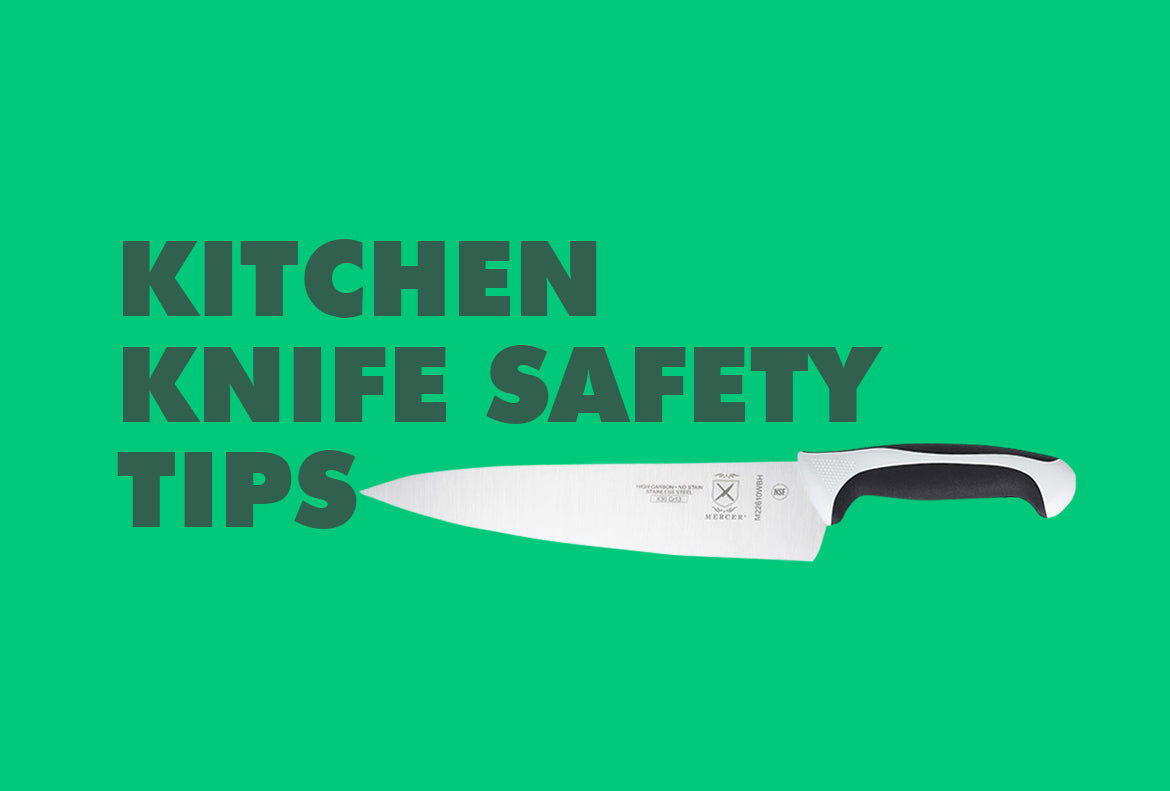Your cart is currently empty.

Cutlery is vital for the activity of every commercial kitchen, and so it is necessary to realize how to hold a knife and use it effectively. A good chef knife is strong, durable, light in weight, and requires occasional sharpening, ergonomic, much sharper than the usual steel and, simple to clean.
Hand knife injuries often happen when the knife slips while cutting or trimming. In most cases the blade gets into contact with the worker’s other hand, causing a cut to the hand and/or fingers. Injuries can also occur to other parts of the body, including the knife hand itself.
What action do I need to perceive to reduce hand knife injuries?
Keep reading for some valuable and helpful knife safety tips.
Pick the Right Knife for the Task:
Selecting the right knife for the task is one of the most major knife safety tips that foodservice experts should learn. There will be several knives used for a range of different tasks. However, executing this choice can be overwhelming because of the extensive variety of styles, shapes, and sizes of commercial cutlery.
The length of the blade needed to do the task: Always select the blade that is proportional to the food you're cutting. If you have to use a small paring knife to slice vegetables, instead don't use a cleaver to do this task.
Choose the right blade handle: The characteristics of the blade holder including the construction material and durability.
Pick the Right Blade Edge: Before starting the task, you have to be specific about it and decide which blade edge will suit them. For example, Serrated Edge Paring Knife is perfect to peel, trim, and slice through fruits and vegetables, whereas Granton blades are suited for wet foods like cheese and salmon.
Flexible Blade: Some specific tasks require a flexible blade. So, for such an instance, select those blades that are more flexible than a firm one.
Having noted all this, specify the knife/knives to be used for each task and eliminate any others currently in use, including employees’ knives brought in from outside.


Always Use Sharp Knives:
Dull blades cause more accidents because they are harder to work with and require more pressure. Sharp knives do not slip as easily and cut easier. Always use a sharpening stone or knife sharpener to keep the original precision of the blade. Also, if your knife requires just a touch-up between thorough sharpening, try using a sharpening steel.

Keep Your Kitchen Knives Clean:
Wash knives immediately after use. Do not leave knives in a sink of soapy water where they cannot be seen. Keep the sharp edge of the knife away from you when washing. A clean knife is also more comfortable to handle. Food residue can get your knife slippery, so be sure to keep it clean for the most reliable grip.
Also, make sure your knives are dishwasher safe. Some knives may not be dishwasher safe to retain their precise edge. Some types of knives may have handle or blade shapes that are likely to collect food residues, so inspecting your knives before and after washing can help stop food from developing up.
Provide Safe Storage for Knives/Blades:
It is important to prevent circumstances where knives are left lying on work surfaces or where individuals carry them in their hands from one place of work to another. A designated knife storage space must be given to your kitchen that keeps organized and encourages a safe knife routine. Even, simply setting your knife in a drawer is not safe for your workers or your knife. Also, allocate suitable belts or sheaths to employees who need to move around carrying knives.

Consider the Working Environment / Stay Focused!
Concentrate on what you are doing when using a knife. Do not engage in the conversation when using knives, pay attention to the task underway. Good lighting, support for the item being cut, and housekeeping are important factors in ensuring knife safety. If you're distracted, halt what you're doing and deal with the distraction before turning to cut. Each person using a knife should have enough working space to move freely and allow them to operate safely without endangering themselves or others.
These tips will avoid the injuries caused while using your knives in the kitchen.
To view our cutlery collections, visit Kitchen Cuttlery
Leave a Comment
Stay home & get your daily
needs from our shop
Start You'r Daily Shopping with Nest Mart
Best prices & offers
Orders $50 or more
Free delivery
24/7 amazing services
Great daily deal
When you sign up
Wide assortment
Mega Discounts
Easy returns
Within 30 days